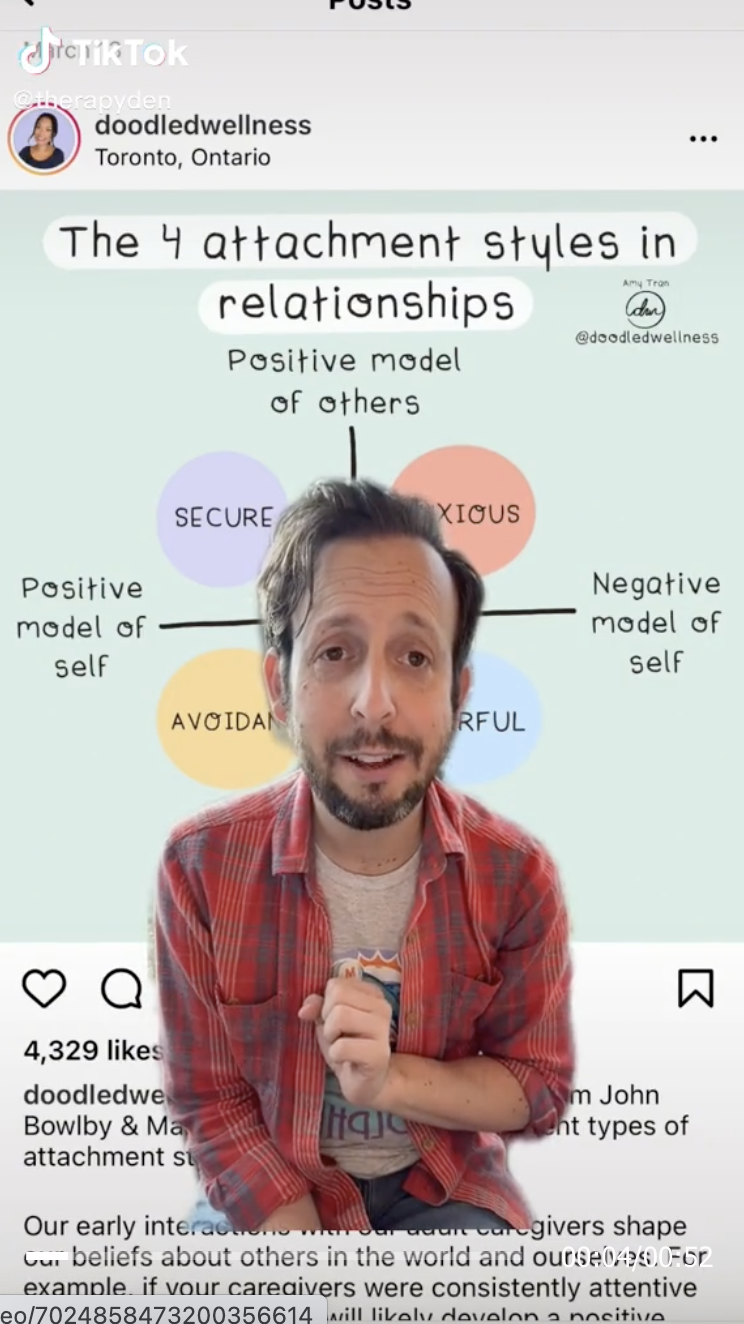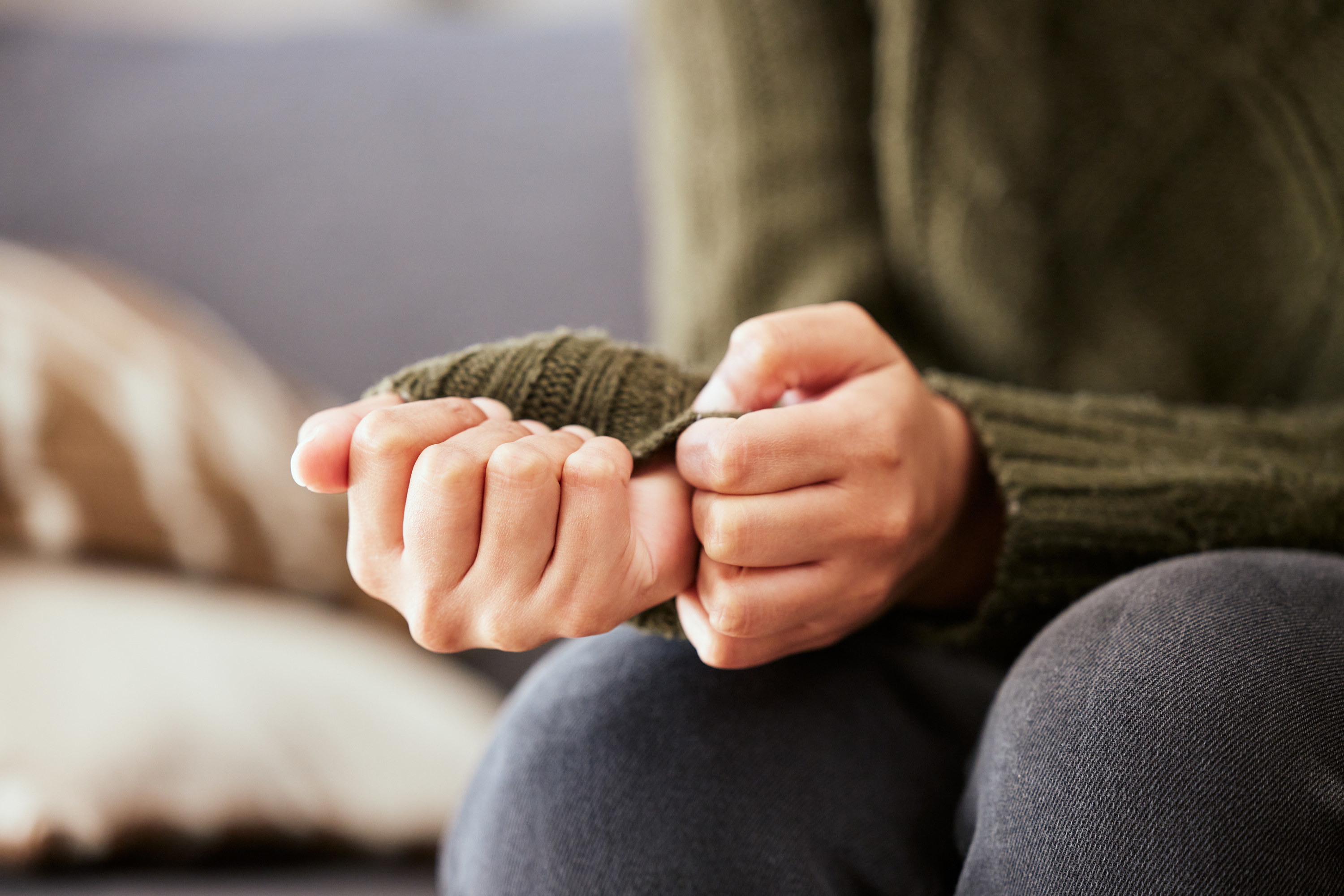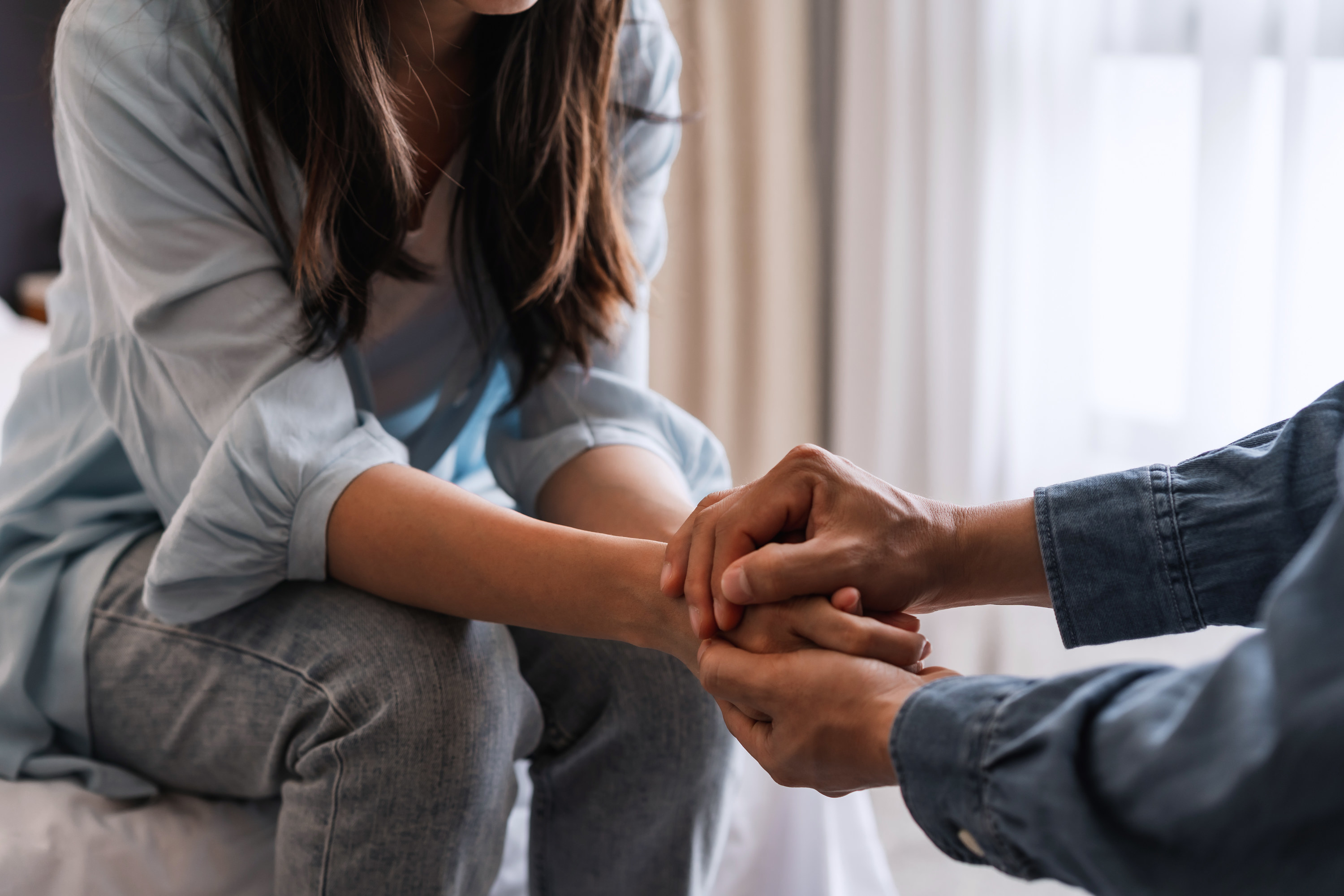" If you have some shame or guilt over your attachment style , remember that it ’s not your fault . It ’s what your family pay you when you were little — and you had absolutely no control condition over it . "
At this point, my TikTok For You page consists of everything from recipe roundups and adorable dogs doing tricks to makeup tutorials — all with some dating advice videos sprinkled in.
A common theme I often see pop up in TikToks about dating and relationships is ~attachment styles~.
In case you’re unfamiliar:Attachment stylesare different ways of behaving in relationships. They are developed during childhood, have a lot to do with a child-and-parent dynamic, and oftentimes are brought into adulthood.
To get a better understanding of all things attachment styles — including what the four of them are, how they affect relationships, and more — BuzzFeed reached out toJeff Guenther, a licensed professional counselor, who is known for his relatable and informative relationship advice onTikTok.
Before we get into the nitty-gritty, it’s important to first learn what the different types of attachment styles are. There are four of them: anxious, avoidant, secure, and disorganized.
1.Anxious Attachment Style
Jeff also said that those who have an anxious attachment style often feel as if they are being sensitive or needy. This type also doesn’t speak up or ask for their wants or desires to be met.
Regarding how one becomes an uneasy fond regard type , Jeff say that it often stems from the somebody getting discrepant passion growing up or not getting all of their needs met as a child .
2.Avoidant Attachment Style
Jeff went on to say that avoidant attachments get overwhelmed easily with emotions, and they aren’t that great at being vulnerable. “They need space and they need time to process things,” he added.
3.Secure Attachment Style
“Secure attachment style people typically have good emotional boundaries, and they’re able to express themselves pretty freely because they understand when they’re overwhelmed by their emotions and what they need to do about that in order to get grounded,” Jeff told BuzzFeed.
4.Disorganized Attachment Style
“Disorganized attachment styles really wanted to feel a safe bond with their parents, but they knew that it wasn’t safe. So this attachment style wants to get close to people, and [they think],I trust you but I’m going to get hurt, I’m going to be abused, this is going to be horrible— so it’s a real roller coaster,” Jeff told BuzzFeed.
" It ’s also really incredibly hard to be that person , because you so seriously want to connect , but you ’re so scared to do that because there ’s been so much pain in the past , " he sound out .
Jeff said it’s important to learn and understand your attachment style to navigate relationships in a healthy way. “I think that you should just own where you are and understand how [your attachment style] operates, how you react, and how you get triggered,” Jeff told BuzzFeed. “The thing is that if you truly own it, accept it … you will start skewing more toward secure attachment. It just kind of happens.”
He continued, “When you have some shame or guilt over the attachment style that you have, remember that it’s not your fault. It’s what your family gave you when you were little — and you had absolutely no control over it.”
Attachment styles affect relationships — friendships, family dynamics, and even romantic relationships — so it’s important to understand not only your triggers but also the triggers of the other person in the relationship.
" You have to be apprehension of the other person ’s [ baggage ] . You have to taste your very expert not to take it in person — even though you ’re definitely fail to take things personally , particularly at first , " Jeff excuse .
“For example, if an anxious person is dealing with an avoidant, the anxious person might recognize how the other person is behaving and be like, ‘Oh, it looks like you’re feeling overwhelmed,’ so you offer them some space,” Jeff told BuzzFeed.
" If it ’s the other way around and you ’re the one dealing with an unquiet affixation style , you ’ll understand that they call for reassurance , so you give it to them . So you ’re sort of call what your anxious or avoidant individual might demand and you ’re giving it to them , even though it might feel uncomfortable . Through those relationships , a lot of times , there ’s a long ton of healing , " he say .
Lastly, it’s important to keep in mind that attachment styles are fluid and change as you experience different things in life.
" I finger like a lot of the great unwashed were name themselves during the pandemic because it was a time when emotions were heightened . Maybe a person was once an anxious attachment , but then they were feel avoidant because they were isolated , " Jeff said .
" Most multitude likely go up and down the spectrum of bond flair throughout liveliness . Your adherence manner are fluid . A lot of times , we might skew one elbow room or the other , " he supply .
Jeff also emphasized that attachment styles aren’teverything. “There’s more to you than your attachment style. You have to find a balance of not being too obsessed with it, not letting it rule your relationship — but also respecting it, because it is a thing that comes up,” he explained.
Jeff said that it ’s important to lean into your community and utter to your friend when you palpate your attachment expressive style influencing your deportment and the means you reckon . " Your friends plausibly know how you may be in a relationship or at the start of a relationship , " he say .
“Let them know that you need help, you need support, in addition to doing some sort of reality testing — such as journaling to sort out your emotions and put them on paper,” Jeff told BuzzFeed.
To learn more about self-growth and relationships from Jeff, check out hisTikTokorwebsite.









